What Exercise Is Good For Lower Back Pain?
Read more about What Exercise Is Good For Lower Back Pain article that offers insights into pelvic tilts, the Cat-Cow stretch, and other targeted movements designed to strengthen, stretch, and support your lower back, promoting overall spine health.
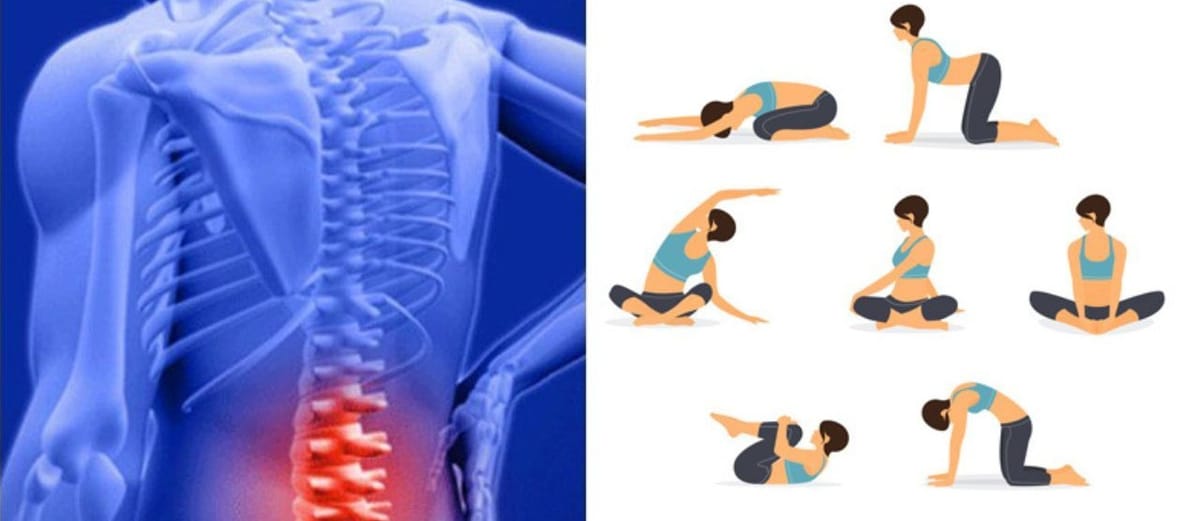
Lower back pain is a common ailment that affects people of all ages and lifestyles. Whether it's due to poor posture, sedentary habits, or a physically demanding job, discomfort in the lower back can significantly impact daily activities and overall quality of life. Fortunately, regular exercise can be a powerful remedy to alleviate and prevent lower back pain.
However, not all exercises are created equal. In this article, we will explore the most effective exercises for reducing lower back pain, strengthening the core, and improving flexibility. From gentle stretches to targeted strengthening routines, discover the best ways to keep your back healthy and pain-free.
Pelvic Tilts
Lie on your back with your knees bent. Tighten your abdominal muscles and gently tilt your pelvis upward, flattening your lower back against the floor. Hold for a few seconds and release. Strengthens the core muscles and supports the natural curve of the spine.
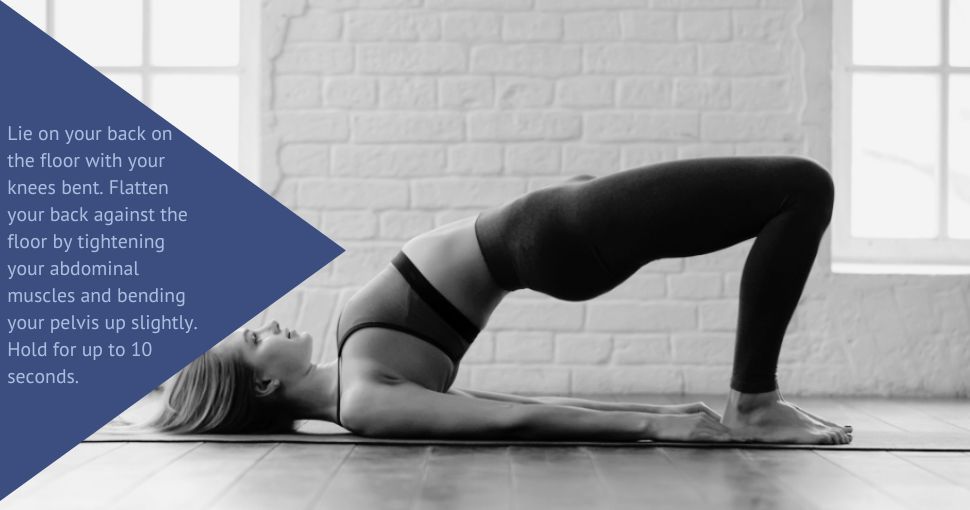
Cat-Cow Stretch
Start on your hands and knees. Inhale, arching your back, and lifting your head (Cow position). Exhale, rounding your back and tucking your chin to your chest (Cat position). Promotes flexibility in the spine and stretches the muscles along the back.
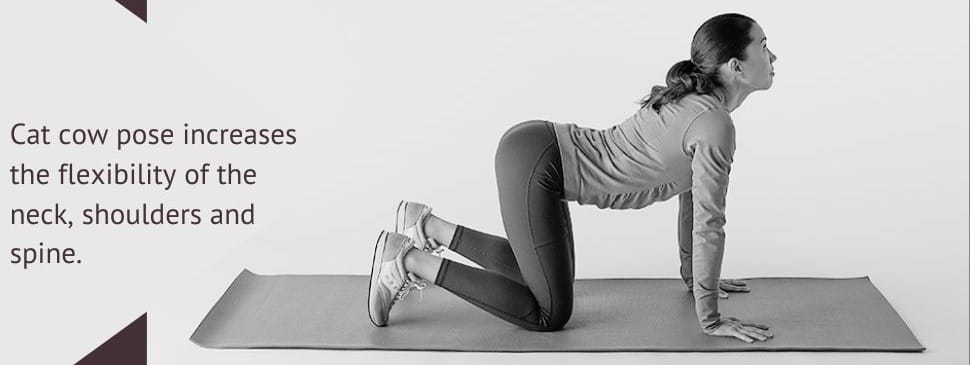
Child’s Pose
This pose helps to stretch muscles around your back and hips. Lean forward, keeping your buttocks on your heels, and rest your forehead on the floor. With this pose, kneel and sit on your knees. Slowly move your arms so they're next to your legs, palms facing up.

Bridge Exercise
Lie on your back with your knees bent and feet flat on the floor. Lift your hips toward the ceiling, creating a straight line from shoulders to knees. Hold briefly and lower. Strengthens the back, buttocks, and abdominal muscles.
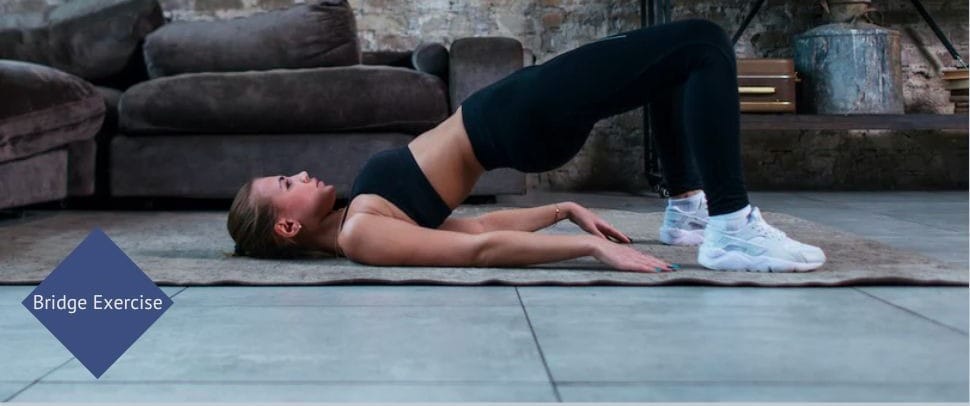
Knee-to-Chest Stretch
The Knee-to-Chest Stretch is a simple yet highly effective exercise for alleviating lower back pain. This stretch gently elongates the lower back muscles and provides immediate relief from tension and discomfort. Here’s a closer look at its uses and benefits:
Uses of the Knee-to-Chest Stretch
- Relieving Lower Back Tension:
- The Knee-to-Chest Stretch helps to relieve tension in the lower back by gently stretching the muscles and soft tissues. This can be particularly beneficial for those who experience stiffness or tightness in this area.
- Improving Flexibility:
- Regularly performing this stretch can improve the flexibility of the lower back, hips, and thighs. Enhanced flexibility in these areas can help reduce the risk of future injuries and contribute to overall better mobility.
- Promoting Blood Circulation:
- Stretching exercises like the Knee-to-Chest Stretch promote blood circulation to the lower back region. Increased blood flow helps in the healing process and ensures that muscles and tissues receive adequate oxygen and nutrients.
- Easing Sciatic Pain:
- For individuals suffering from sciatica, the Knee-to-Chest Stretch can provide relief by reducing the pressure on the sciatic nerve. This stretch gently pulls the spine into a position that can help alleviate the pain radiating down the leg.
Benefits of the Knee-to-Chest Stretch
- Pain Relief:
- By stretching and elongating the lower back muscles, the Knee-to-Chest Stretch can provide immediate pain relief. This is particularly beneficial for those suffering from chronic lower back pain or those recovering from a recent back injury.
- Stress Reduction:
- Stretching exercises, in general, are known to help reduce stress and promote relaxation. The Knee-to-Chest Stretch, in particular, can help relax the lower back muscles, reducing overall stress levels and promoting a sense of well-being.
- Enhanced Posture:
- Regularly incorporating the Knee-to-Chest Stretch into your routine can help improve your posture. Better posture reduces the strain on the lower back and helps prevent future pain and injuries.
- Ease of Performance:
- One of the great advantages of the Knee-to-Chest Stretch is its simplicity. It requires no special equipment and can be performed anywhere, making it an accessible exercise for people of all fitness levels.
How to Perform the Knee-to-Chest Stretch
- Lie on Your Back:
- Start by lying flat on your back on a comfortable, firm surface, such as a yoga mat or carpet.
- Bend Your Knees:
- Slowly bend your knees and place your feet flat on the ground.
- Bring One Knee to Your Chest:
- Using both hands, gently pull one knee towards your chest. Keep the other foot flat on the ground.
- Hold the Position:
- Hold the stretch for 20-30 seconds, feeling a gentle stretch in your lower back and buttocks. Ensure that your lower back remains pressed against the floor.
- Switch Legs:
- Release your knee and return to the starting position. Repeat the stretch with the opposite leg.
- Double Knee-to-Chest Stretch:
- For a deeper stretch, you can also perform the stretch by bringing both knees to your chest simultaneously.
Incorporating the Knee-to-Chest Stretch into your daily routine can significantly contribute to lower back pain relief and overall spinal health. By dedicating a few minutes each day to this simple yet effective exercise, you can enjoy increased flexibility, reduced tension, and improved posture.
Seated Forward Bend
Position yourself with your legs either together or hip-width apart, maintaining a straight alignment in front of you. Ensure that you are seated and elevated on your sitting bones. Inhale deeply and extend both arms towards the ceiling, ensuring they remain parallel to your ears. Upon exhaling, continue reaching forward and gradually lean forward, extending your hands towards your toes.
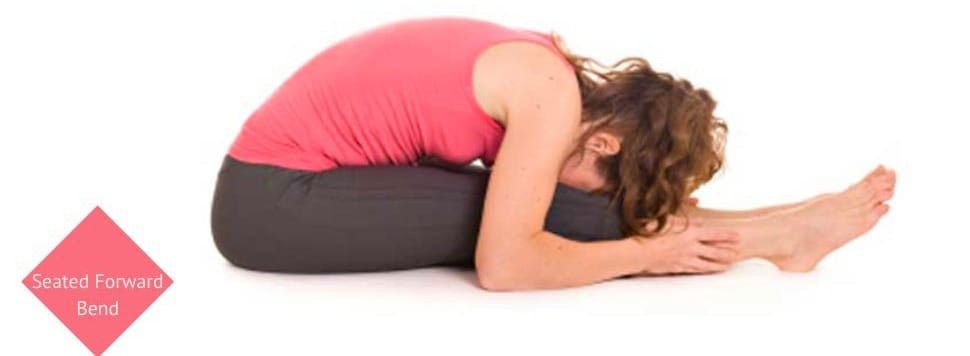
Partial Crunches
Engage and fortify your lower back and abdominal muscles with the highly effective partial crunch exercise. Begin by lying on your back, knees bent, and feet firmly planted on the floor. Enhance your experience with the added comfort of a padded mat. Position your hands behind your neck or beside your head, and initiate the movement by gently lifting your shoulders off the floor—ensure that your hands and elbows play no role in this action.

Exhale as you elevate your upper body and inhale as you gracefully descend back to the starting position. Hold the raised position for approximately one second before executing a controlled return to the floor. Through this deliberate repetition, you engage and stretch your back muscles, effectively distributing the load to support your upper body weight.
It's crucial to refrain from performing this exercise if you are currently experiencing acute back pain. Opt for this routine during pain-free periods to optimize its benefits while minimizing the risk of discomfort. Incorporate the partial crunch into your fitness regimen to cultivate strength and resilience in your core muscles.
Swimming Exercise
Swimming is an excellent exercise for individuals seeking relief from back pain. It combines aerobic exercise with strength training in a low-impact environment, making it suitable for people of all fitness levels. Here are the key uses and benefits of swimming for back pain relief:
Uses of Swimming for Back Pain Relief
- Low-Impact Exercise: Swimming reduces the stress on the spine and joints due to the buoyancy provided by water. This makes it an ideal exercise for those suffering from back pain, as it minimizes the risk of further injury.
- Muscle Strengthening: Swimming engages multiple muscle groups, particularly the core and back muscles. Strengthening these muscles can help support the spine and alleviate pain.
- Improved Flexibility: The range of motion required for swimming strokes helps improve overall flexibility, which can reduce stiffness and tension in the back.
- Cardiovascular Health: Swimming is an effective cardiovascular workout that improves overall fitness and circulation. Better circulation can aid in the healing process and reduce inflammation.
Benefits of Swimming for Back Pain Relief
- Reduces Pressure on the Spine: The buoyancy of water significantly decreases the gravitational pull on the body, reducing the pressure on the spine and allowing for pain-free movement.
- Enhances Core Stability: Strong core muscles are crucial for maintaining proper posture and supporting the spine. Swimming, especially strokes like freestyle and backstroke, targets and strengthens the core muscles, providing better spinal support.
- Alleviates Tension and Stress: The rhythmic and repetitive movements in swimming can have a calming effect, helping to alleviate mental stress and muscle tension, which are often contributors to back pain.
- Increases Endurance: Regular swimming builds endurance and stamina, enabling individuals to perform daily activities with less strain on their back muscles.
- Promotes Weight Loss: Maintaining a healthy weight is vital for reducing back pain, as excess weight can place additional strain on the spine. Swimming is an effective way to burn calories and shed extra pounds.
- Boosts Mobility: Swimming requires coordinated movements that enhance overall body mobility and range of motion. Improved mobility can prevent stiffness and promote better posture.
Tips for Swimming with Back Pain
- Warm-Up: Always start with a gentle warm-up to prepare your muscles and joints for exercise.
- Choose the Right Stroke: Some strokes may be more beneficial than others. For example, the backstroke is often recommended for individuals with back pain as it puts minimal strain on the spine.
- Use Proper Technique: Proper form is crucial to prevent aggravating back pain. Consider working with a swim coach or physical therapist to ensure you are using the correct techniques.
- Avoid Overexertion: Start slowly and gradually increase the intensity and duration of your swimming sessions to avoid overexertion and potential injury.
Incorporating swimming into your exercise routine can provide significant relief from back pain while improving overall fitness and well-being. With its numerous benefits, swimming is a versatile and enjoyable way to maintain a healthy, pain-free back.
Key Takeaways!
Incorporating these exercises into your routine can contribute to the alleviation of lower back pain and enhance the overall health of your spine. However, it's essential to consult with a healthcare professional before starting any new exercise program, especially if you have existing back issues or concerns.
Frequently Asked Questions
Q: Are exercises effective for relieving lower back pain?
A: Yes, exercises can be highly effective in relieving lower back pain. Specifically tailored exercises, such as stretching, strengthening the core muscles, and improving flexibility, can alleviate tension and improve the overall condition of the lower back.
It's essential to consult with a healthcare professional or a physical therapist to determine the best exercises for your specific condition and to ensure proper technique and safety. Regular exercise, combined with proper posture and ergonomics, can significantly reduce lower back pain and improve overall spinal health.
Q: What are pelvic tilts, and how do they help with lower back pain?
A: Pelvic tilts involve gently tilting the pelvis upward while lying on your back, which helps strengthen core muscles and support the natural curve of the spine, aiding in lower back pain relief.
Q: Can the Cat-Cow stretch be beneficial for lower back pain?
A: Yes, the Cat-Cow stretch can be highly beneficial for lower back pain. This gentle yoga stretch helps to increase flexibility in the spine, improve posture, and release tension in the lower back muscles.
The arching and rounding movements in the Cat-Cow stretch help to stretch and strengthen the muscles around the spine, reducing stiffness and discomfort. Incorporating this stretch into your daily routine can contribute to relieving lower back pain and promoting overall spinal health.
However, it's essential to consult with a healthcare professional before starting any new exercise routine, especially if you have existing back issues.
Q: How does the Child's Pose stretch help with lower back pain?
A: The Child's Pose involves sitting back on your heels and reaching forward, stretching and relaxing the lower back and hips, making it a beneficial exercise for lower back pain relief.
Q: What is the purpose of the Bridge exercise, and how does it support the lower back?
A: The Bridge exercise is designed to strengthen the core muscles, glutes, and hamstrings while also providing support to the lower back. It involves lying on your back with your knees bent and feet flat on the floor, then lifting your hips off the ground to create a "bridge" position. This movement engages the abdominal muscles, which helps improve core strength and stability.
Additionally, the glutes and hamstrings are activated, leading to better overall lower body strength. The Bridge exercise also supports the lower back by promoting proper alignment and posture, reducing strain on the lumbar spine. Incorporating Bridges into your workout routine can contribute to a stronger, more resilient lower back and improved overall fitness.
Q: Can the Knee-to-Chest stretch alleviate tension in the lower back?
A: Yes, the Knee-to-Chest stretch can indeed help alleviate tension in the lower back. This stretch involves lying on your back and bringing one knee towards your chest, holding it with your hands.
This position helps stretch the muscles in the lower back, including the lower spine and glutes. By gently pulling the knee closer to the chest, you can release tension and improve flexibility in these areas.
Regularly practicing this stretch can contribute to reducing lower back pain and promoting overall spinal health. However, it's essential to perform the stretch correctly and avoid overexertion to prevent any strain or injury.
Q: Is it safe to perform exercises for lower back pain without consulting a professional?
A: It's generally not recommended to perform exercises for lower back pain without consulting a professional, especially if you're experiencing persistent or severe pain. While some gentle exercises may help alleviate minor discomfort, there's a risk of exacerbating the issue if you're not sure of the underlying cause or the appropriate exercises for your condition.
Consulting a healthcare professional, such as a physiotherapist or doctor, can provide personalized guidance and ensure that you're performing safe and effective exercises tailored to your specific needs and condition. It's always better to err on the side of caution when it comes to back pain to avoid potential complications or worsening of symptoms.
